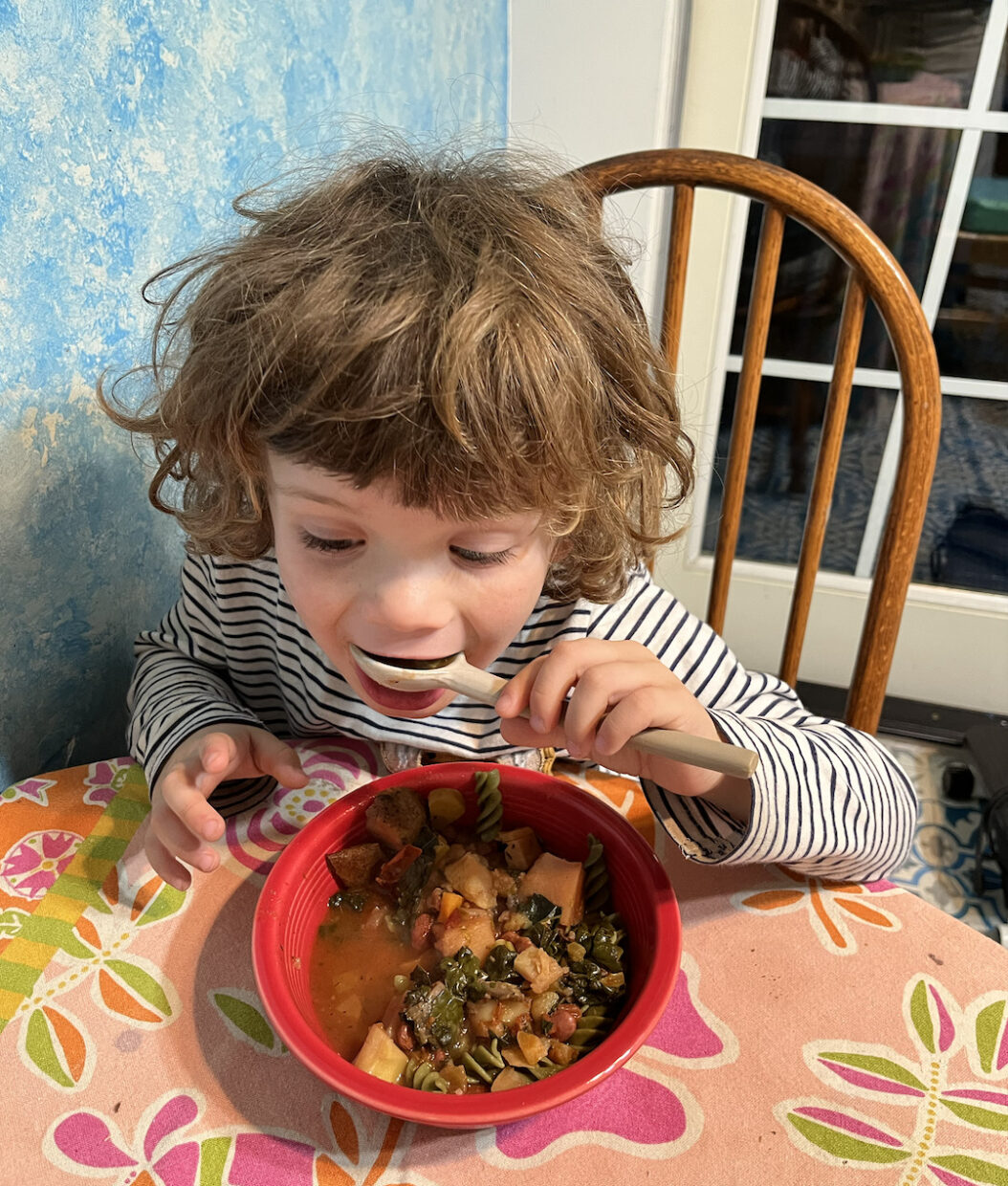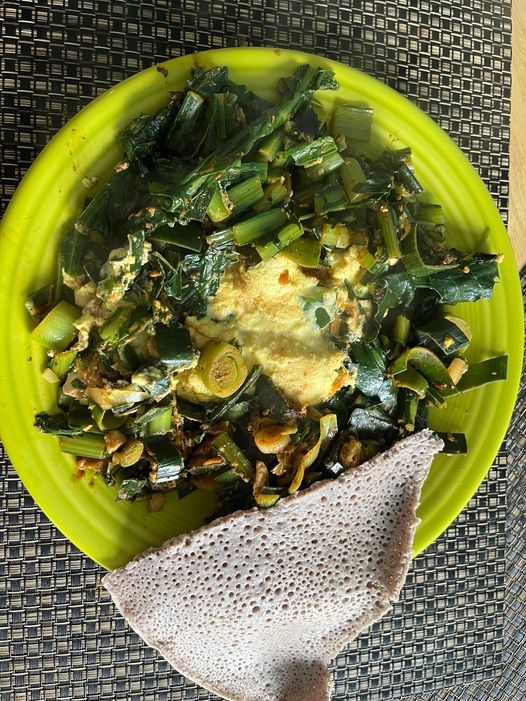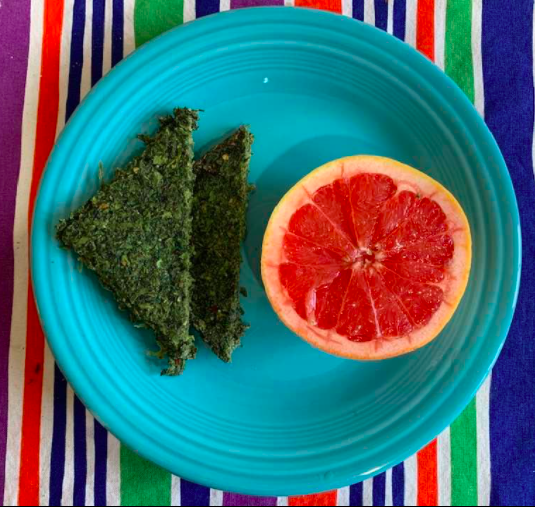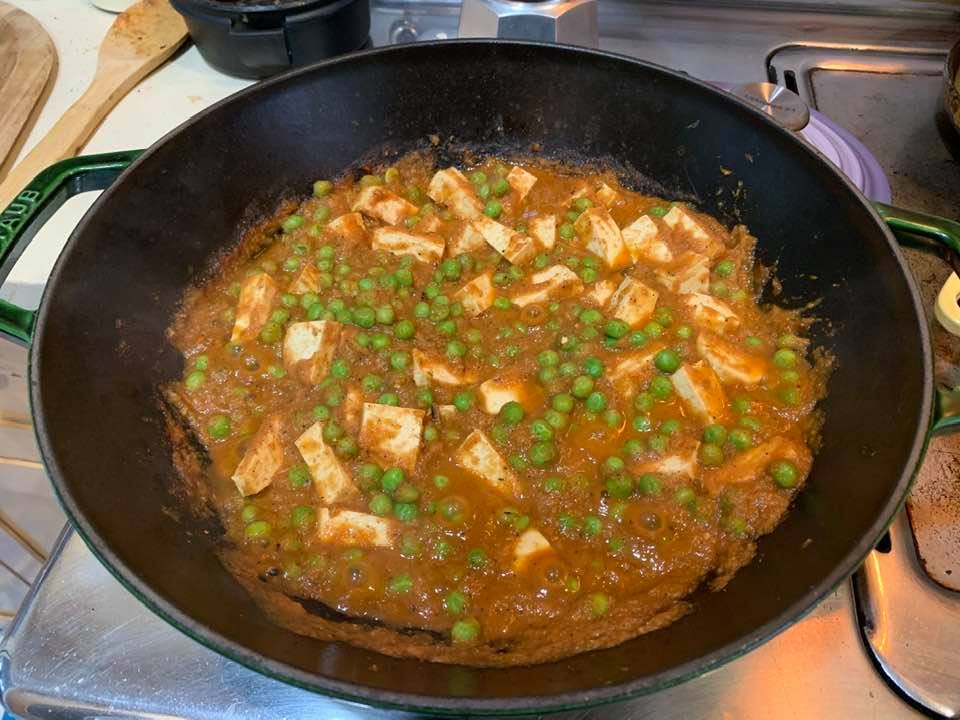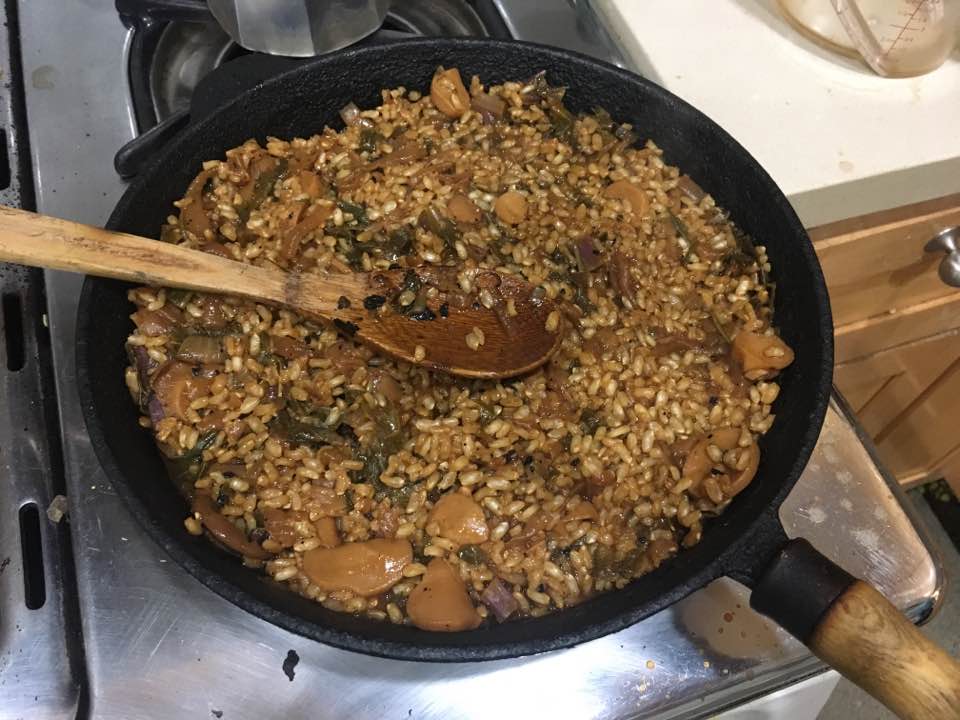Looking for some light entertainment to help me sleep, I came across Mary Berry‘s new show Love to Cook. It’s sometimes difficult to watch cooking shows in which the ingredients are animal products, because the dissonance between the lightheartedness and the food served is hard to stomach (excuse the pun). But in this case, I watched the series armed with the notion that we live in the future, and in a world where hard-boiled vegan eggs and mushroom root carne asada exist (and are terrific) I can easily veganize whatever she makes.
Lucky for me, Mary Berry made an incredible dish that marries spaghetti, spiralized zucchini, and tinned crab–and I already know how to make fantastic vegan crab meat. It’s the same recipe as Melissa Huggins’ recipe for vegan crab cakes, minus the breadcrumbs, and you can make the whole batch and keep it in the fridge to make crab cakes or more pasta the next day. With a few substitutions, here are the ingredients:
- 1 cup cooked garbanzo beans
- 1 cup hearts of palm, drained
- 1 tbsp vegan mayo
- 1 tsp vegan worcestershire sauce
- 1 teaspoon lemon juice
- 1 teaspoon dijon mustard
- 1/4 cup sliced leek
- 1-2 nori sheets
- 1 tablespoon fresh parsley
- 1 tsp Old Bay seasoning
Toss all of these in the food processor, process until combined and a bit chunky, and keep in fridge.
Then, proceed to follow Mary Berry’s recipe for the spaghetti, substituting several hefty spoonfuls of the vegan mix for the crab meat. I’m a protein hoarder these days (back to strength training!) so I used Banza linguine. You’ll need
- 1 package Banza spaghetti or linguine
- 6 tbsp olive oil
- 1 large onion or two small ones, thinly sliced
- 1 red chilli, deseeded and diced (I used a tiny bell pepper, just for color, because I don’t like things that are too spicy these days)
- 2 garlic cloves, crushed
- 3 large zucchini (about 500g/1lb 2oz), spiralized into spaghetti-like strands, or, if you’re lazy like me, the already-spiralized variety available from Whole Foods
- about 1/2-2/3 cup of the vegan crab mix
- juice of ½ lemon
- Small bunch of dill, chopped
While the Banza cooks in boiling water with some salt, heat up olive oil in wok and add onion, chili, and garlic, and wilt some, for about 3-4 mins. Then, add the zucchini and toss a bit (2 mins or so). After a couple of minutes, add the vegan crab mix and toss (2 mins or so). At this point, the Banza should be ready; drain and toss in the wok with everything else. Drizzle lemon juice and sprinkle dill to finish. Good stuff.


